SB Television
Back to the Future: A Veteran Sailor Returns to Catamaran Life
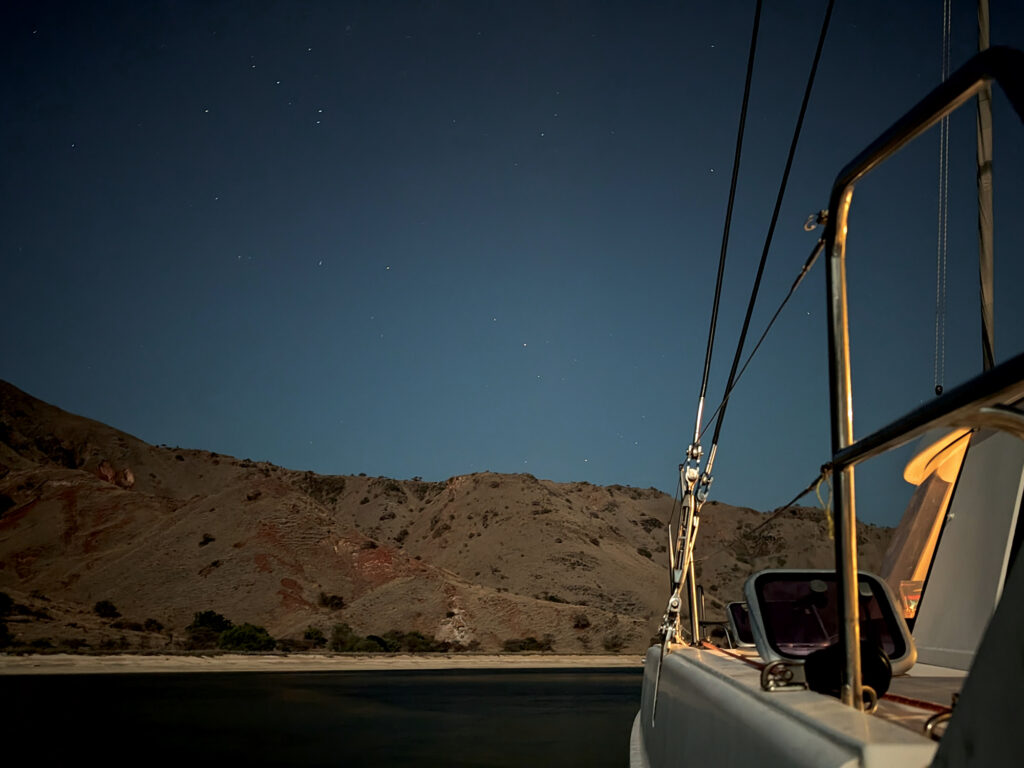 After two decades afloat, Patrick Schulte finds the best boat is simply the right one for the life you want to live.
Patrick Schulte
After two decades afloat, Patrick Schulte finds the best boat is simply the right one for the life you want to live.
Patrick Schulte
There’s an old saying that I’m sure we’ve all heard: “Use the right tool for the job.” I like to think of boats as the tools and our cruising grounds as the job.
We’re often drawn to the new, shiny, expensive self-ratcheting wrench when what we really need is the greasy, dinged-up crescent wrench. That’s marketing for you. As seen on TV.
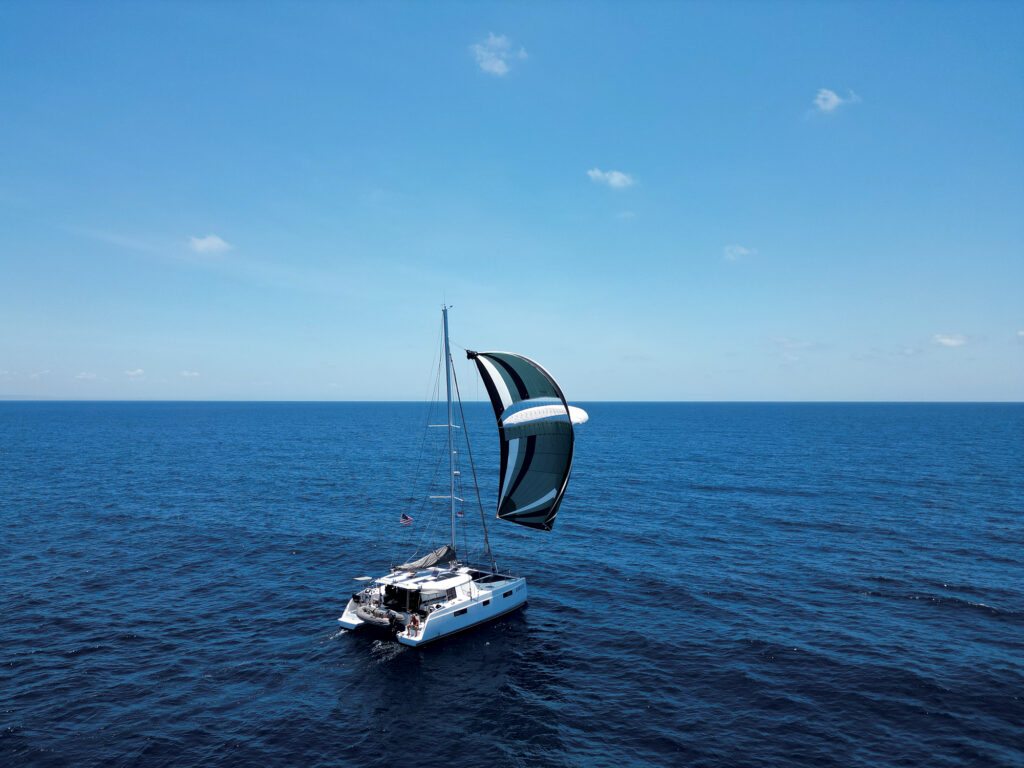 The Schulte family enjoyed many wonderful downwind runs across the Pacific and Southeast Asia in their catamaran, often with their Parasailor flying.
Patrick Schulte
The Schulte family enjoyed many wonderful downwind runs across the Pacific and Southeast Asia in their catamaran, often with their Parasailor flying.
Patrick Schulte
And while I’m sure we’d all like to think that we aren’t affected by marketing, wemost definitely are. If the cruising dreamers out there don’t think their boat choice has been affected by boat shows and the glossy perfection of online influencers’ boats (and their made-for-TV lives), I’ve got a bridge to sell them.
I’ve owned four liveaboard boats in the past 22 years, and I’m not immune to shiny baubles. In 2003, my wife and I decided to sail around the world. I’d read just one sailing blog about four friends circumnavigating on a catamaran, along with one book about a couple doing so. That was the extent of my knowledge when we decided to go conquer the world’s oceans. Within a few months, we had left Chicago and were bobbing around at anchor in the Bahamas on a brand-new, 35-foot catamaran. I figured that a boat was a boat, and a shiny one with two hulls seemed better than one dull hull.
Miraculously, four years after leaving, we returned to Fort Lauderdale, Florida, from the other direction as circumnavigators. Obviously, over the course of four years, I’d learned a ton about boats and sailing. And both of us really credited the catamaran for much of our success. Its stability made the trying times bearable. Being at sea in a catamaran is tough, but being at sea rolling back and forth endlessly, or heeled hard over for days at a time, is far tougher.
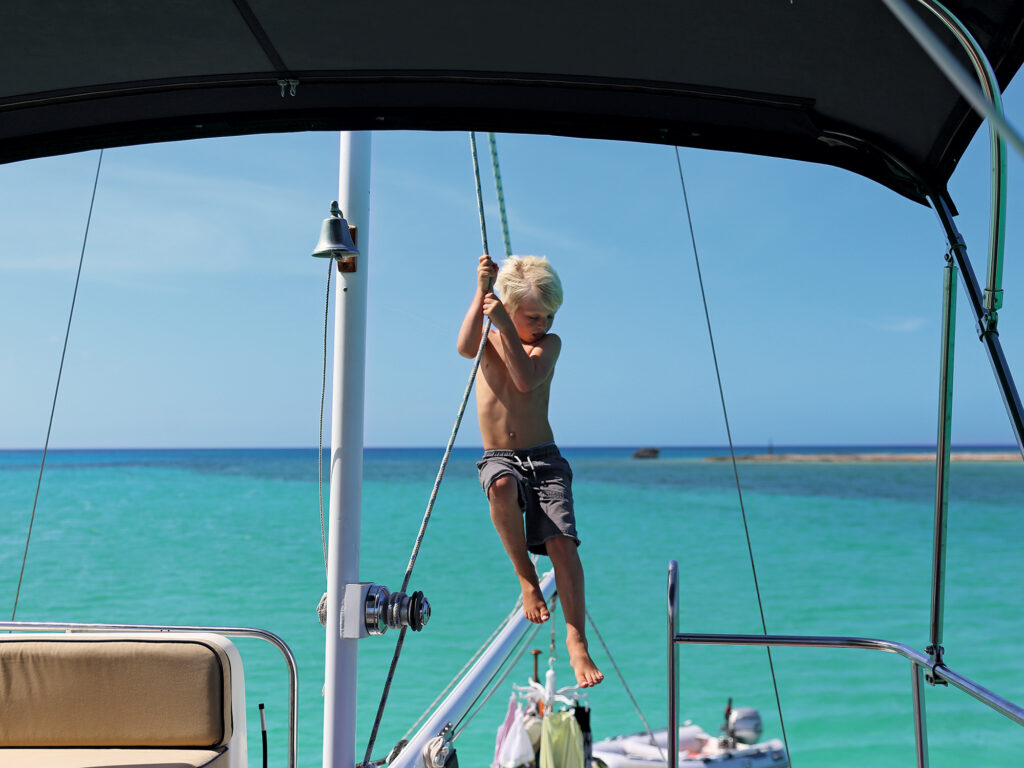 Having grown up on boats, Lowe was equally adept at swinging across trawlers and catamarans.
Patrick Schulte
Having grown up on boats, Lowe was equally adept at swinging across trawlers and catamarans.
Patrick Schulte
We came back to land sure that we had gotten the cruising life out of our system. We turned to overlanding in a ’58 VW bus. I know, right? We drove from Alaska to Argentina over the next couple of years and eventually got our sea legs back on a cargo ship to Germany. By the time we drove the VW off that ship, there was a baby on the way and a choice to be made.
Back to boat life. What better way to raise a kid? But our cruising grounds (the job) had changed. We’d planned to live and sail around Mexico. We didn’t need a catamaran (the tool for the job) for that. We could use a crescent wrench.
For a fraction of the price of our catamaran, we bought a solid beast of a 43-foot monohull. It had a pilothouse with tons of light (a la catamaran life) and plenty of sole space for a toddler to learn to walk. Yes, a 43-foot monohull actually has a ton more sole space than a 35-foot catamaran. We sailed that boat from San Francisco to Puerto Vallarta, and spent the next few years raising not one but two kids aboard, while bouncing between Baja and the Pacific coast of Mexico.
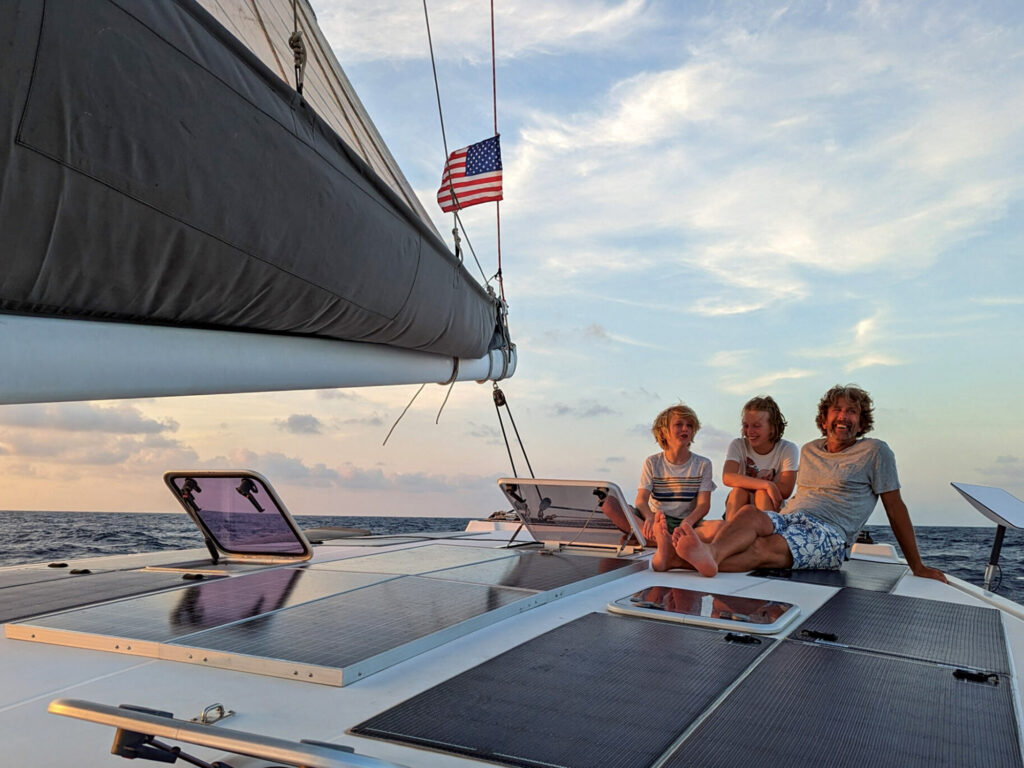 Bumfuzzle’s crossing to the Marquesas aboard their Nautitech was smooth sailing.
Patrick Schulte
Bumfuzzle’s crossing to the Marquesas aboard their Nautitech was smooth sailing.
Patrick Schulte
That boat cemented two ideas. One, monohulls aren’t that terrible. Rolly conditions at anchor are relatively few, and a stern anchor can usually solve the problem. And two, so long as my passages are only a couple of days, I can deal with how uncomfortable they are under sail. It’s also worth mentioning that once you are out at anchor, you really don’t spend much time wishing you were on a different boat. You’re just happy to be where you are.
After the monohull, we took off for a couple of years, cruising around in vintage motor homes and Airstreams. But RV life is a bit tame for me. I mean, what kind of life is it if you don’t have to obsess over the weather?
Next, we decided to cruise the Caribbean (another new job). With the knowledge I’d gained with catamarans and monohulls, I veered left and bought a completely new tool: a Grand Banks trawler. I know, a stinkpot. Crazy, but it was absolutely the right tool for the job.
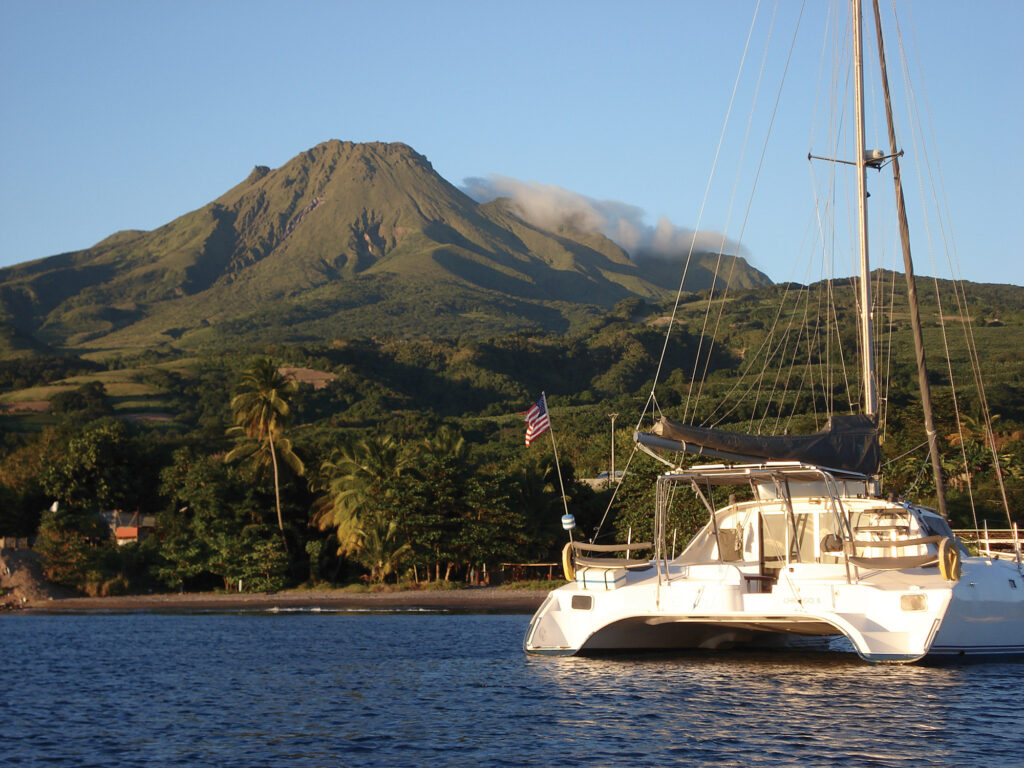 Pat and Ali’s first boat, a 35-foot Wildcat, proved a worthy circumnavigator.
Patrick Schulte
Pat and Ali’s first boat, a 35-foot Wildcat, proved a worthy circumnavigator.
Patrick Schulte
Let’s face it: Caribbean sailing isn’t exactly demanding. Most of the time, we’re talking about distances measured in tens of miles, not hundreds, and never thousands. These are the easiest cruising grounds imaginable, and 99 percent of your time is going to be spent at anchor. While catamarans are the ultimate home for those at anchor, they aren’t exactly mandatory. In fact, I’d argue that spending catamaran-type money on a boat just to sit at anchor in front of Foxy’s is a colossal waste. The interest you could earn on the difference in purchase price between a solid monohull (or trawler) and a cat would easily pay your beach-bar tab for life, with money left over for incidentals like food.
That said, when we were in Aruba and decided to sail around the world again, there was never a question in our minds what tool we’d use for the job. We sold the trawler and hopped on over to a 40-foot Nautitech catamaran. For big ocean crossings and long-term life aboard, there is just no substitute for the speed and comfort of a cat.
Full circle. Toolbox complete. From catamaran to monohull to trawler to catamaran again. It had been 20 years since our first cat, and things had most definitely changed. Our 35-footer, in 2003, was still a novelty. If we met other cruisers onshore and they asked what boat we were on, a sufficient answer was: “We’re on the catamaran.” Tour boats would circle us at anchor. At a dock, passersby would stop for pictures. And in one of the surest signs that a 35-foot cat was a different beast in 2003, we were constantly asked, “Are you crew?” At the time, it may have been due to our youthful appearance, but it was also because that boat was considered big.
Today, we rarely ever see a cat as small as our 40-footer. Somehow, a 46-foot cat is considered the right size for a retired couple, and 46-plus appears to be about right for families. It’s not just the size that’s grown, though. It’s also the price. Anyone who has ever browsed online listings knows that you can buy four or five bluewater-capable monohulls for the price of a “condomaran.”
A boat is a tool. It’s a tool used to crack loose the rust of normal life.
But there have been other changes. I’d argue that build quality has excelled. When I would work up the mast on our first cat, I genuinely feared that if I were to drop a screwdriver, it would go straight through the boat from top to bottom. Open ocean wouldn’t be what would sink us; a screwdriver would.
Cat design has improved remarkably. Remember when people constantly talked about “slap”? Our first cat would be stopped in its tracks by seas on the nose, as the waves sliced past the bows and slammed the bridge deck. Today’s cats no longer have clearance issues, and designers seem to have finally stopped trying to leave exposed stairways under there as well. Of course, all that bridge-deck height comes with massive freeboard. Docking a cat used to be simple. Anyone could hop off the bow and onto a dock to tie off a line. Today, you’d be risking your life leaping off the side of a cat from those heights.
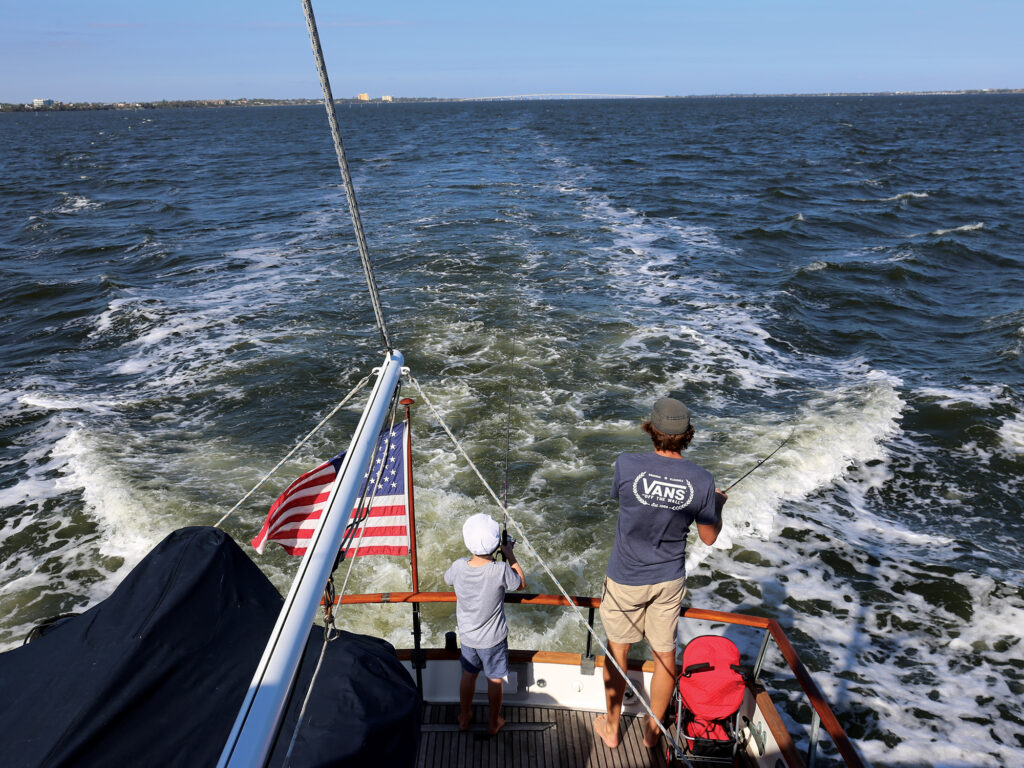 Fishing with the kids—whether on a monohull or multihull, power or sail—is always time well spent.
Patrick Schulte
Fishing with the kids—whether on a monohull or multihull, power or sail—is always time well spent.
Patrick Schulte
With the design improvements, we found that our 40-footer sails nearly twice as fast as our 35-footer in similar conditions. Upwind performance is infinitely better, while downwind sailing is a dream come true. If everyone could sail a cat with a Parasailor and 10 knots of wind from behind, they would put every monohull manufacturer out of business. It’s heaven on earth.
With 65,000 bluewater miles under my catamaran, monohull and trawler keels, I feel as though I am qualified to answer the ever-debated question: “Which boat is best?” My whispered reply: Catamaran. Yet I still qualify my answer.
A boat is a tool. It’s a tool used to crack loose the rust of normal life. It’s a tool used to get you out on the water. It’s a tool you can use to turn your way into an adventurous, exciting, worthwhile life. At the end of the day, the boat is a tool used to complete a job—the job of fulfilling a dream and a life well-lived.
The post Back to the Future: A Veteran Sailor Returns to Catamaran Life appeared first on Cruising World.
- Home
- About Us
- Write For Us / Submit Content
- Advertising And Affiliates
- Feeds And Syndication
- Contact Us
- Login
- Privacy
All Rights Reserved. Copyright , Central Coast Communications, Inc.